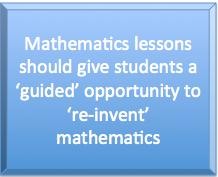Variation theory states that to learn a phenomenon means to simultaneously discern and focus on the critical aspects/features of the phenomenon. To discern a particular feature, the learner must experience variation in that dimension. When an aspect of a phenomenon varies while other aspects remain invariant, the aspect that varies would be discerned (Pang and Marton 2005). Click What is variation theory? for further explanation and example.
Proponents of variation theory defined four patterns of variation and invariance (contrast, separation, fusion, and generalization) to facilitate the discernment of critical aspects.
Contrast occurs when a learner experiences variation of different values or features in an aspect of a phenomenon. To experience something, the learner must experience something else to make a comparison. For example, to experience what “round” is, the learner must experience other shapes such as rectangle or triangle. Only after having experienced other values (rectangle, triangle etc.) of the aspect (shape) can the learner discern the specific shape of round. The pattern of contrast focuses on a particular value or feature of an aspect.
Separation happens when a learner focuses on an aspect of a phenomenon. To experience a certain aspect of something separately from other aspects, it must vary while other aspects remain invariant. In this pattern, the aspect is discerned by the learner. For example, to discern the aspect of the “shape” of an object, other aspects (e.g., size, color, and height) must be kept invariant while varying the aspect of “shape.” In this way, the aspect of “shape” can be separated from other aspects. Contrast and separation occur when two or more objects have a varying aspect while other aspects remain invariant.
Fusion takes place when a learner wants to discern several aspects of a phenomenon that vary simultaneously. To experience a phenomenon, the learner must discern all critical aspects at the same time when different critical aspects vary simultaneously. For example, if a teacher wants to teach students what a robin is, he/she should expose the students to simultaneous variation in all critical aspects of a robin (e.g., feathers, size, and sound). The students will grasp a concept if they can simultaneously discern all critical aspects of the concept.
Generalization occurs when a learner wants to apply his/her previous discernment to various contexts. To fully understand an object of learning, the learner must experience many other examples to generalize the meaning. The idea of “roundness” can only be achieved after the learner has experienced various round objects, such as a round ball, a round plate, a round table, and so on.
With respect to the sequence of using the four patterns of variation and invariance, researchers suggested that contrast and separation should be first used to help students discern each critical aspect separately, followed by fusion that simultaneously varies all critical aspects (Ki 2007; Marton and Tsui 2004; Pang 2002). Generalization could be used after students have simultaneously discerned all critical aspects to generalize the discernment to other contexts. (p. 255)
Source:
Learning from Comparing Multiple Examples: On the Dilemma of “Similar” or “Different” by Jian-Peng Guo & Ming Fai Pang & Ling-Yan Yang & Yi Ding. Published online: 22 February 2012. # Springer Science+Business Media, LLC 2012.
Educ Psychol Rev (2012) 24:251–269 DOI 10.1007/s10648-012-9192-0
